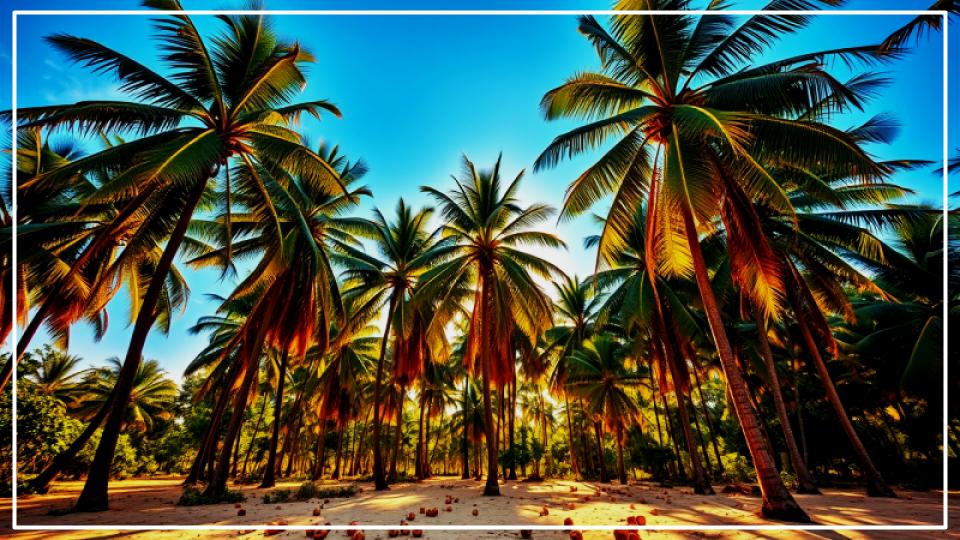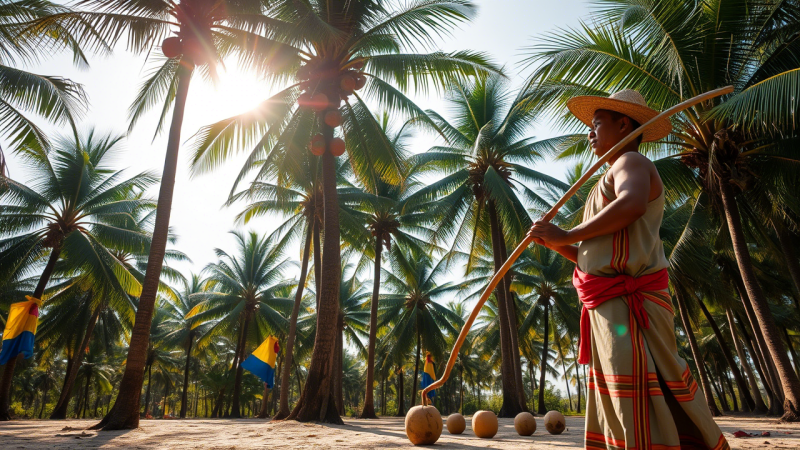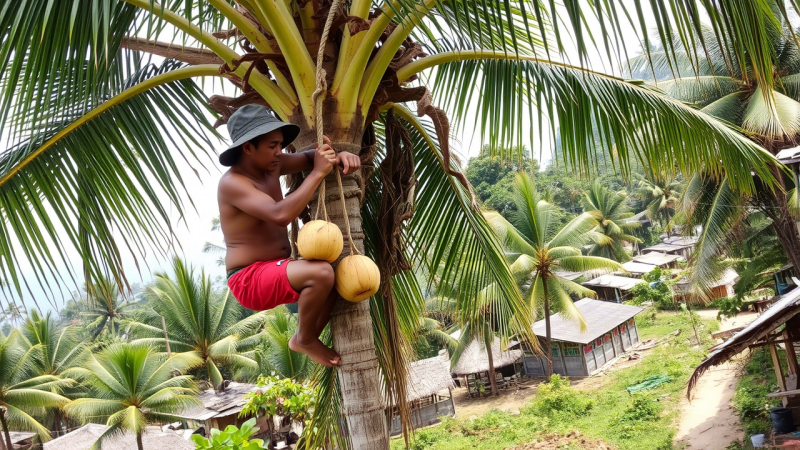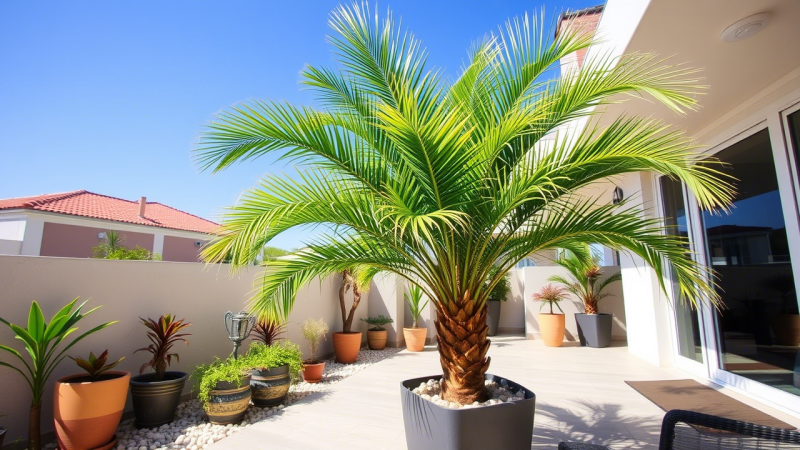
There’s a certain romance to the coconut, isn’t there? It’s the very essence of a tropical escape, conjuring images of swaying palms, pristine beaches, and the sweet, refreshing taste of its water. But beyond its idyllic image lies a global agricultural powerhouse. Have you ever wondered which country is famous for producing the most coconuts? The answer might surprise you, taking you on a journey far beyond the typical tourist postcard. This article will not only reveal the world’s leading coconut producer but also explore the rich culture surrounding this incredible fruit and even touch on how you can bring a piece of the tropics into your own home. Let’s crack open this fascinating story together.
The World of Coconuts
Here’s what you need to know about the world’s most beloved tropical fruit.
- The Top Producer: Indonesia is the reigning champion of coconut production, cultivating billions of coconuts each year across its vast archipelago.
- The ‘Tree of Life’: In producing nations like the Philippines and India, the coconut palm is revered as the “Tree of Life” because every part of it—from roots to fronds—is used for food, shelter, or income.
- Not a True Nut: Botanically speaking, the coconut is a drupe, a type of stone fruit, much like a peach or a plum.
- Home Growing is Possible: If you live in a warm, humid climate (USDA Zones 10-12), you can successfully grow your own coconut palm tree with the right care.
The Crown Goes to Indonesia
When we picture coconuts, our minds might drift to the Caribbean or Hawaii. While those places certainly have their share of beautiful palms, the undisputed leader in global coconut production is the sprawling archipelago of Indonesia. With its thousands of volcanic islands providing the perfect trifecta of sandy soil, abundant rainfall, and year-round warmth, Indonesia produces a staggering number of coconuts annually—often exceeding 18 million metric tons, according to data from the Food and Agriculture Organization of the United Nations (FAOSTAT).
The scale of coconut cultivation in Indonesia is simply immense. It’s not just a commercial industry; it’s a deeply ingrained part of the nation’s culture and rural economy. For millions of smallholder farmers, the coconut palm is a primary source of livelihood. In my own travels through Southeast Asia, I’ve been struck by the sight of coconut palms lining not just coastlines, but also village pathways and family gardens, a testament to their everyday importance.

Following closely behind Indonesia are two other titans of the coconut world: the Philippines and India. The Philippines, in particular, has a profound cultural connection to the coconut, where it is affectionately known as the “Tree of Life.” Every part of the palm is utilized, from the oil-rich flesh and hydrating water to the husks (coir) used for ropes and mats, and the fronds for weaving and thatching roofs. India, with its long coastline and tropical climate, also boasts a massive coconut industry, where coconuts are a staple in cuisine, religious ceremonies, and traditional medicine.
Why These Regions Dominate Coconut Cultivation
It’s no accident that these tropical nations lead the world. The coconut palm, Cocos nucifera, is rather particular about its living conditions. It thrives in the kind of environment that most of us dream of for a vacation.
The Perfect Climate
Coconuts require a warm, humid climate to flourish. They are happiest with:
- Consistent Warmth: Average daily temperatures between 70°F and 80°F (21°C to 27°C) are ideal. They are not frost-tolerant, which is why their cultivation is limited to a specific band around the equator.
- High Humidity: A humid environment helps the palms thrive and prevents the fronds from drying out excessively.
- Abundant Rainfall: They need plenty of water, typically between 60 and 80 inches of rainfall annually, well-distributed throughout the year.
The Right Soil
While you might see them growing right on the beach, coconut palms actually prefer well-draining, sandy loam soils. One of the common mistakes I see gardeners make is planting them in heavy clay, which can lead to root rot. They have a high tolerance for salinity, which allows them to grow in coastal areas where other plants might fail. This adaptability is a key reason for their success in archipelagic nations like Indonesia and the Philippines.

Bringing the Tropics Home: Tips for Growing Coconut Palms
While most of us don’t live in a climate that can support a coconut plantation, those in the warmest parts of the country (think South Florida, parts of Southern California, or Hawaii) can certainly try their hand at growing coconut palms. It’s a wonderfully rewarding project that adds an unparalleled structural and tropical element to a garden.
If you’re in USDA Zones 10-12, here’s how you can get started:
- Start with a Sprouted Nut: Your best bet is to purchase a coconut that has already started to sprout from a reputable nursery. You can try sprouting your own by placing a fresh, unhusked coconut on its side in a warm, moist spot, but this can be a slow and uncertain process.
- Choose a Sunny Spot: Your palm will need at least six to eight hours of direct sunlight per day.
- Prepare the Soil: Dig a hole that is twice the width of the root ball but no deeper. Amend the native soil with plenty of sand and rich compost to ensure excellent drainage and fertility. 4t. Planting and Watering: Place the sprouted nut in the hole so that about one-third of the coconut remains above the soil line. Water it deeply and consistently, especially during the first year as it establishes its root system. Young palms are thirsty!
- Fertilize Regularly: Coconut palms are heavy feeders. I recommend using a fertilizer specifically formulated for palms, which will have the right balance of nitrogen, potassium, and micronutrients like manganese and magnesium.
A common issue I see is yellowing fronds, which often points to a nutrient deficiency, usually potassium. Applying a slow-release palm fertilizer two to four times a year during the growing season can prevent this and keep your palm looking lush and green.

A Tree of Abundance and Beauty
From the sprawling plantations of Indonesia to the family-run groves in the Philippines and India, the coconut is so much more than a simple fruit. It is a cornerstone of economies, a pillar of cultures, and a symbol of tropical life recognized the world over. Understanding which country is famous for producing the most coconuts opens our eyes to the global interconnectedness of the food we enjoy and the incredible work required to bring it to us.
Whether you’re lucky enough to live where you can grow your own palm or simply enjoy the taste of coconut in your kitchen, its story is a rich and fascinating one. So the next time you crack open a coconut or use its milk in a recipe, take a moment to appreciate this remarkable gift from the “Tree of Life,” cultivated with care halfway around the world.
Read More
The Global Apple Orchard: Unveiling the Country That Produces the Most Apples
